In the watery realms of freshwater habitats worldwide, a diverse array of creatures thrives. Among them are furry mammals like otters, river dolphins, and hippos, soaring birds such as dippers, herons, and kingfishers, delicate insects like mayflies, water striders, and dragonflies, finned inhabitants like bass, lake trout, and piranhas, as well as amphibious creatures such as frogs, newts, and the extraordinary axolotl.
This page serves as a compilation, showcasing numerous examples of these freshwater animals and many others, each uniquely adapted to their aquatic homes.
Freshwater Ecosystems
Freshwater ecosystems are a precious resource on our planet, accounting for less than 3% of Earth’s total water supply. However, a significant portion of this freshwater is locked in polar ice caps and glaciers, rendering it inaccessible for most life forms.
In fact, only a minuscule fraction of Earth’s water, a mere 0.014%, exists in the form of rivers, lakes, and swamps, capable of supporting a diverse array of organisms. These statistics emphasize the scarcity and importance of freshwater habitats.
Surprisingly, despite the vast expanse of saltwater oceans and seas comprising 97% of Earth’s water, freshwater environments harbor an impressive 41% of all fish species. Moreover, numerous mammals, reptiles, birds, amphibians, and insects heavily rely on freshwater ecosystems for their survival.
The following page contains a compilation of freshwater animals, all of which inhabit habitats like rivers, lakes, swamps, and marshes, showcasing the incredible biodiversity that depends on these crucial water sources.
Take a look below to find captivating images and intriguing information about various creatures that inhabit freshwater environments. Alternatively, you can use the provided index to directly access details about a specific animal.
Freshwater Animals
- Alligator
- Amazonian Manatee
- Axolotl
- Caiman
- Capybara
- Common Watersnake
- Crayfish
- Dipper
- Diving Beetle
- Dragonfly
- Electric Eel
- Freshwater Crab
- Freshwater Jellyfish
- Frog
- Giant Freshwater Stingray
- Green Anaconda
- Hellbender
- Heron
- Hippopotamus
- Kingfisher
- Lake Trout
- Largemouth Bass
- Mayfly
- Newt
- Northern Pike
- Otter
- Piranha
- River Dolphin
- Turtle
- Water Boatman
- Water Strider / Pond Skater
- Water Vole
Alligator
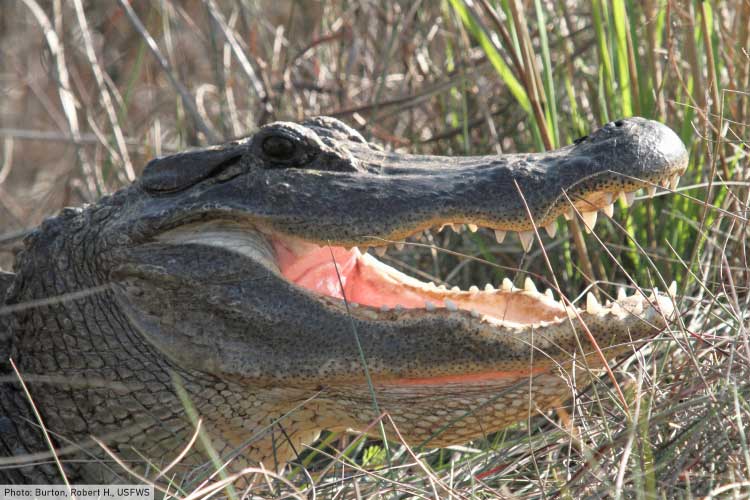
Reptiles known as alligators can be categorized into two species: the American alligator and the Chinese alligator. They belong to the Alligatoridae family, which also includes caimans.
Typically found in North America and Asia, alligators primarily inhabit freshwater environments such as lakes and rivers. Unlike crocodiles, they are less tolerant of saltwater and usually stick to freshwater habitats, although rare instances of them being found in brackish waters have been documented.
The American alligator thrives in the southeastern United States and can grow up to 4.6 meters (15.1 feet) in length, making it more than twice the size of its Chinese counterpart.
As apex predators, American alligators prey upon various freshwater creatures, ranging from fish to waterbirds.
In contrast, the Chinese alligator is in critical danger of extinction, with fewer than 100 adult individuals believed to remain in the wild. Surprisingly, there are more Chinese alligators in captivity than in their natural habitats.
Amazonian Manatee
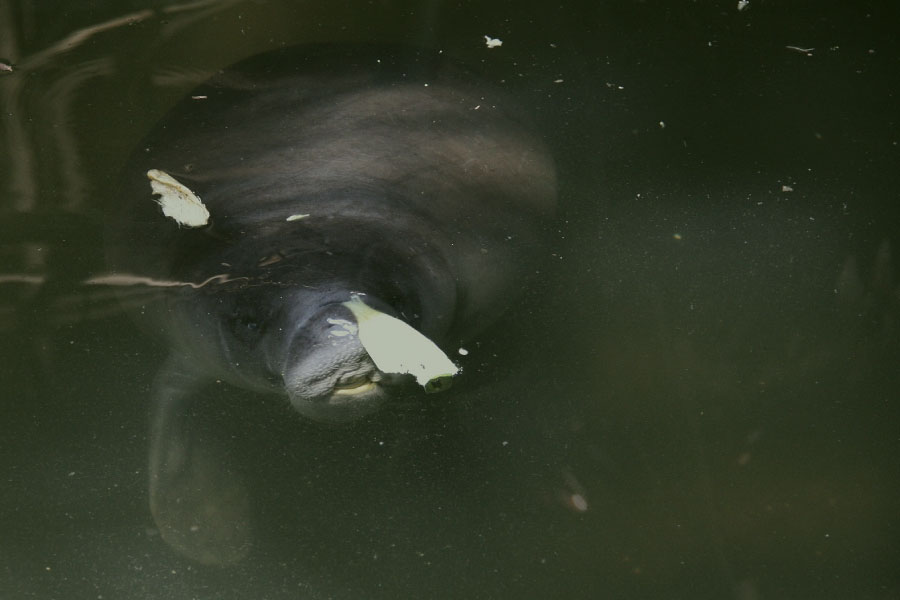
This unique creature, known as the Amazonian manatee, belongs to the family Trichechidae and falls under the classification of mammals. Unlike its counterparts, the West Indian manatee and the African manatee, it dwells solely in freshwater habitats. With its petite size, it holds the title of the smallest among the three manatee species.
The Amazonian manatee calls the South American region of the Amazon Basin its home. It can be found throughout the extensive stretch of the Amazon River itself. Its preferred diet consists of various aquatic plants, as it sustains itself by consuming approximately 8% of its body weight on a daily basis.
Unfortunately, the Amazonian manatee faces a concerning conservation status, being categorized as vulnerable. The primary threat looming over this remarkable mammal is the illegal act of hunting, which poses a significant danger to its survival.
Axolotl
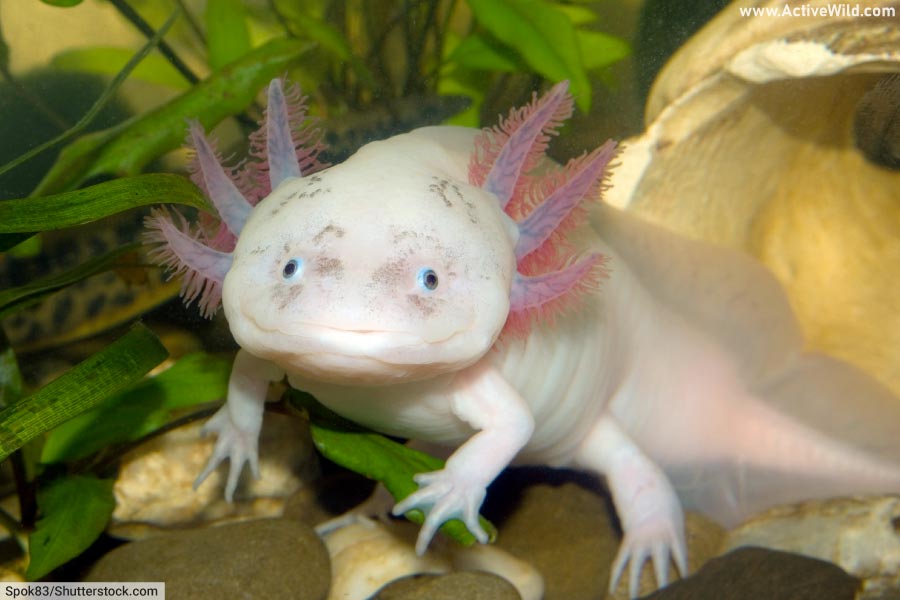
The axolotl, a unique and fascinating amphibian belonging to the Ambystomatidae family, is in a critically endangered state. This captivating creature can be found in the North American region, particularly in Mexico City. Sadly, the axolotl faces numerous challenges as several of its original habitats, once thriving lakes, have been drained. As a result, the species now exists in only a limited number of canals, leading to its critical endangerment in the wild.
Despite these dire circumstances, the axolotl remains highly sought after as a pet and continues to captivate the interest of scientists. One remarkable aspect of this amphibian is its extraordinary ability to regenerate not only lost limbs but also various parts of the eye, heart, and brain. This exceptional trait has made the axolotl a subject of great scientific curiosity.
Distinguished as a member of the salamander order Urodela, the axolotl stands apart from many other amphibians due to its distinctive characteristic: it does not undergo metamorphosis. Even in its adult stage, the axolotl retains its fully aquatic nature, relying on gills rather than lungs for respiration.
Caiman
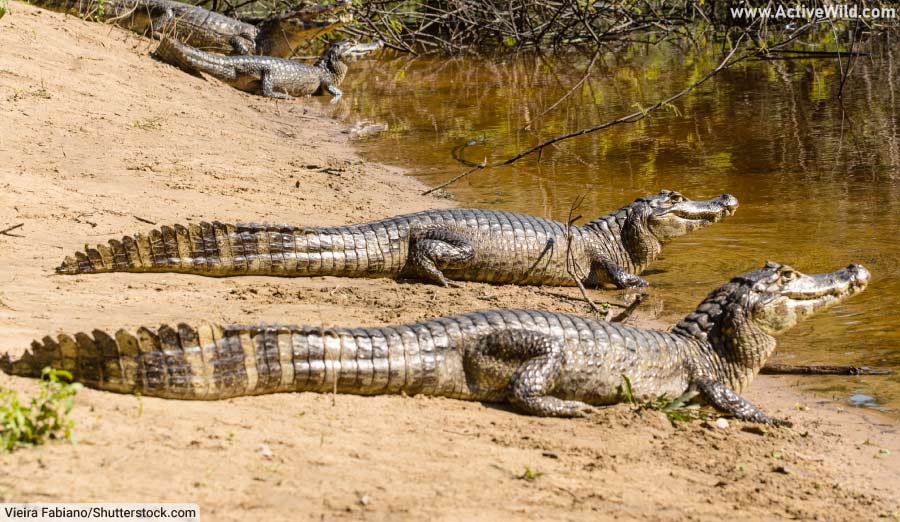
Reptiles known as caimans belong to the Alligatoridae family and the subfamily Caimaninae. They can be found in South America, Central America, and Mexico. Caimans come in six different species, ranging in size from the small Cuvier’s dwarf caiman measuring about 1.4 meters (4.6 feet) to the impressive black caiman, which can grow over 5 meters (16 feet) in length and holds the title of the largest member of the alligator family. Among these species, the spectacled caiman is the most widespread crocodilian.
While the spectacled caiman is found as far north as Mexico, other caiman species are exclusive to South America, inhabiting freshwater lakes, rivers, and wetlands. One notable distinction between caimans and alligators is the length and sharpness of their teeth, with caimans possessing longer and sharper teeth.
Capybara
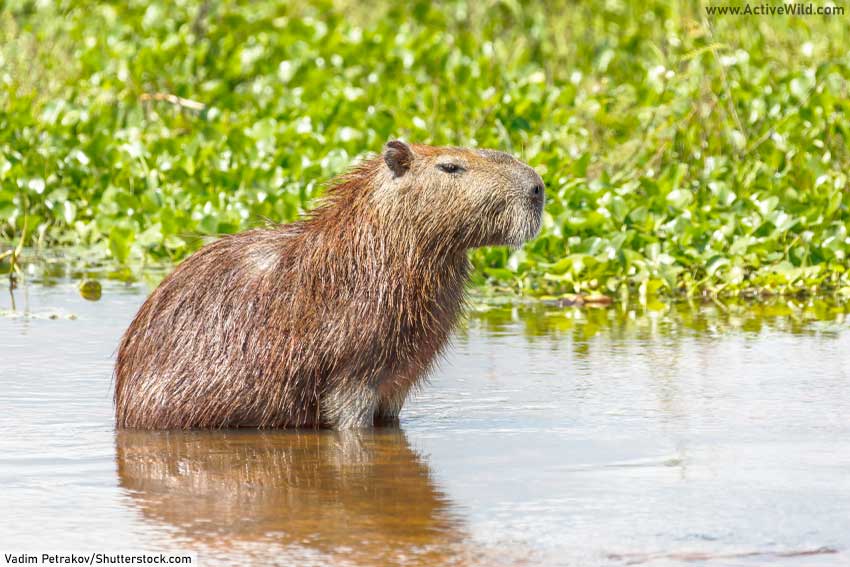
Animal Type: Mammal Family: Caviidae Habitat: South America Scientific Name: Hydrochoerus hydrochaeris Conservation Status: Least Concern
The capybara, the largest rodent on Earth, reaches a size similar to that of a Labrador retriever. This freshwater mammal inhabits various regions of South America, excluding Chile, and extends into Central America. Notably, there have been sightings of capybaras that escaped and are now found in Florida.
Being semiaquatic, the capybara is always found in close proximity to water. Its toes possess slight webbing, aiding in swimming, and it can submerge underwater for up to five minutes.
Common Watersnake
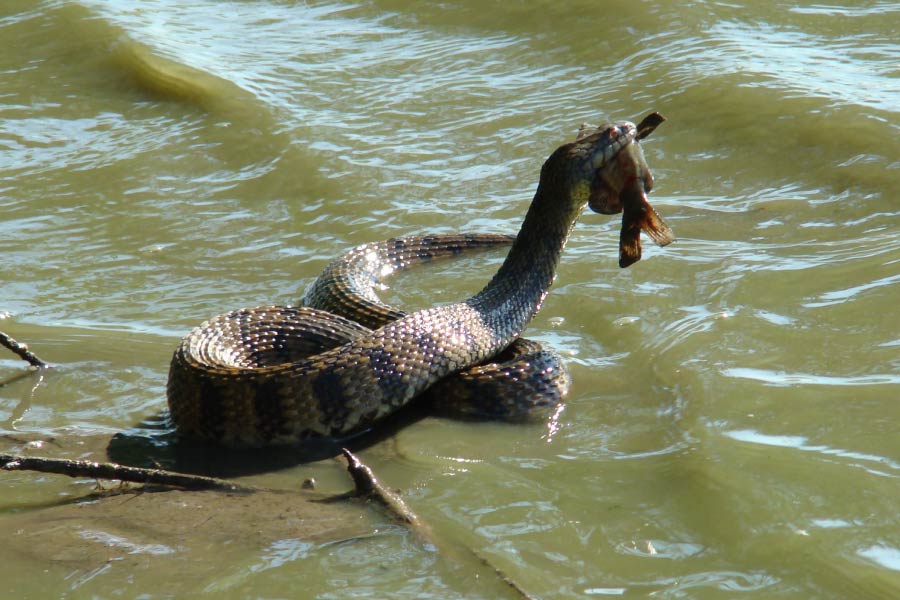
This fascinating creature is a reptile belonging to the Colubridae family, commonly known as the common watersnake. It can be found in North America, specifically in the eastern United States and eastern Canada. Its scientific name is Nerodia sipedon.
The common watersnake is well adapted to aquatic environments and can be spotted in or near various freshwater bodies such as marshes, lakes, and rivers. It has an average length of about 75 cm (2.46 ft) and displays an olive-brown body with darker brown stripes. As it grows older, its colors tend to become darker. Interestingly, it can sometimes be mistaken for the cottonmouth, which is a venomous viper.
Unlike its venomous look-alike, the common watersnake is nonvenomous and poses no significant threat to humans. While it is capable of delivering a painful bite if provoked, it is generally not considered dangerous.
Feeding on a diverse range of prey, the common watersnake has a varied diet that includes vertebrates and invertebrates. It hunts and consumes fish, amphibians, small mammals, and crustaceans, showcasing its adaptability and ability to thrive in its aquatic habitat.
Crayfish
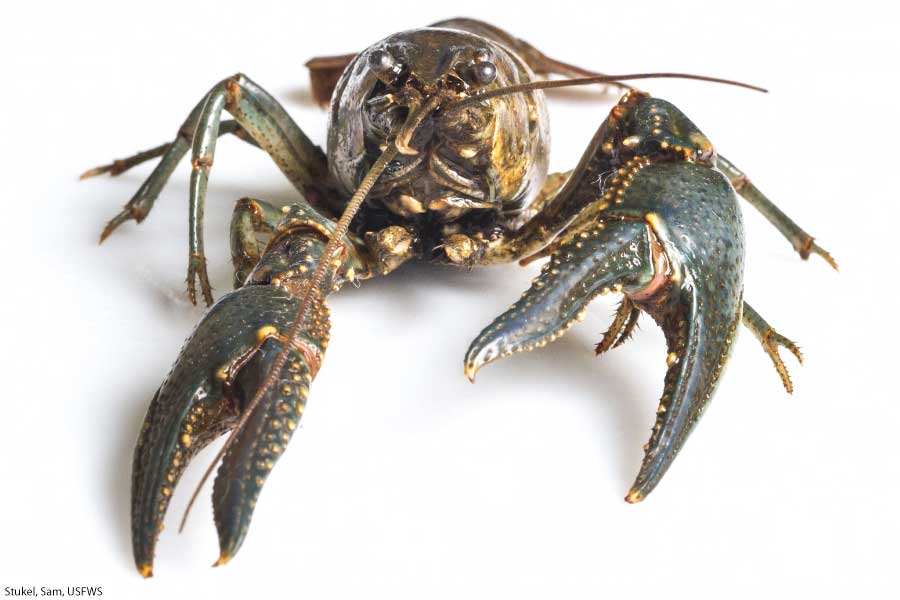
Animal Type: Crustacean Infraorder: Astacidea Habitat: Found on all continents, excluding Antarctica
Crayfish, a type of freshwater crustacean, share a close kinship with lobsters. In North America, these creatures go by the names crawdads and crawfish, while in Australia, they are known as yabbies.
The anatomy of crayfish consists of 20 segments, organized into two main sections: the cephalothorax, housing the head, and the abdomen.
For movement, crayfish rely on ten primary legs for walking, accompanied by additional appendages specialized for tasks such as eating, swimming, and reproduction. The first pair of legs is armed with sizable claws, with the second and third pairs also possessing this feature.
Dipper
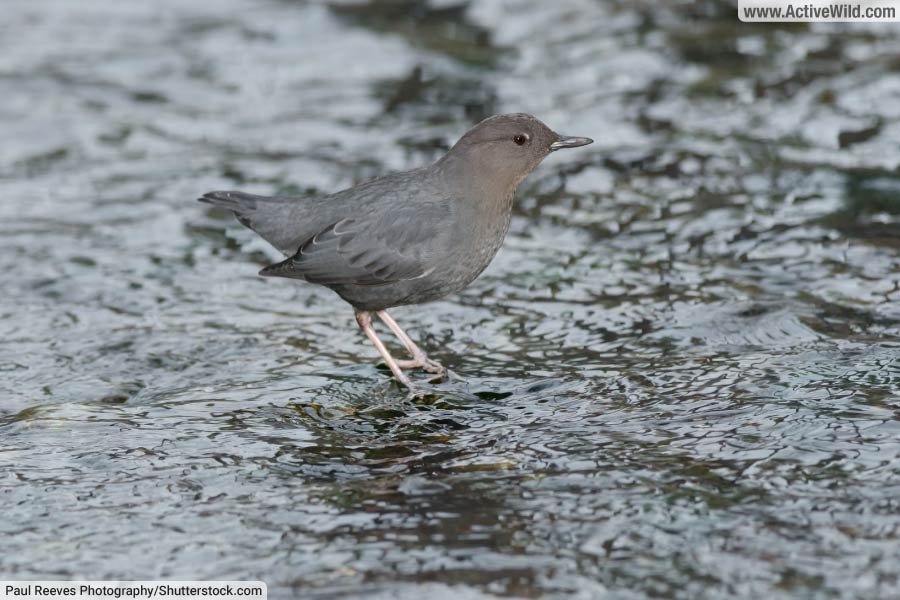
Birds of the Cinclidae family, specifically belonging to the Cinclus genus, possess a unique ability among passerines. These avian creatures, known as dippers, have the remarkable skill of diving and swimming underwater. Found in various regions worldwide, they are frequently spotted near rivers and streams. One distinctive trait of dippers is their characteristic bobbing motion, noticeable as they transition between dives.
Despite being capable of flight, dippers’ short wings also serve as flippers when they venture beneath the water’s surface. Each of the five dipper species resides in a different geographical area, spanning the Americas, Europe, Asia, and the northern extremity of Africa.
Passerines, alternatively referred to as perching birds or songbirds, comprise the broader category to which dippers belong. These birds possess feet that are specifically adapted for perching, featuring three claws pointing forward and one claw pointing backward.
Diving Beetle
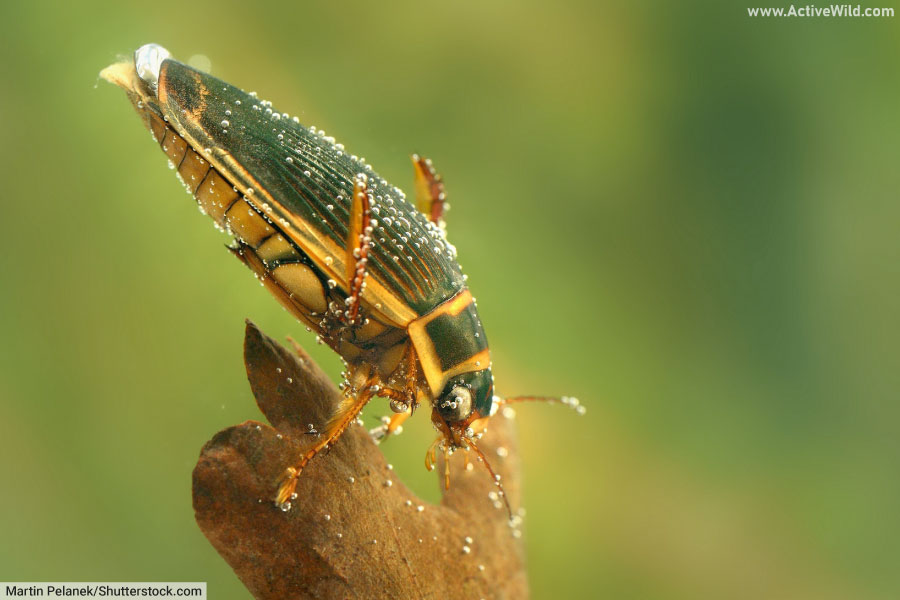
Species: Dytiscidae Description: Diving beetles belong to a remarkable insect family known as Dytiscidae. They have adapted to an aquatic lifestyle, spending the majority of their lives in water, while their adult counterparts possess the ability to fly.
These impressive insects thrive in freshwater habitats and exhibit an insatiable appetite as both larvae and adults. They are formidable predators, preying on tadpoles and occasionally even capturing small fish.
To sustain their underwater expeditions, adult diving beetles possess a clever adaptation. They store pockets of air beneath their protective wing cases and periodically rise to the water’s surface to replenish their air supply. This adaptation enables them to continue their aquatic adventures with efficiency.
Dragonfly

Species of insects known as dragonflies can be found in various freshwater habitats across the globe, excluding Antarctica. These remarkable creatures belong to the sub-order Anisoptera, which falls within the larger order Odonata.
During the majority of their lives, dragonflies exist underwater in their larval stage. In certain species, this stage can endure for up to five years. The larva, commonly referred to as a nymph or naiad, emerges from the water to undergo metamorphosis and transform into its adult form.
The lifespan of adult dragonflies varies depending on the species, ranging from a mere few days to approximately 10 weeks. Both in their larval and adult stages, dragonflies display a ravenous appetite as formidable predators. Dragonfly nymphs feed on tadpoles and even small fish, while adult dragonflies exhibit their hunting prowess while in flight. They seize smaller insects in mid-air and carry their prey to a perch where they consume it.
Remarkably agile, adult dragonflies possess powerful flying abilities, enabling them to execute sudden changes in direction, hover in place, and even fly backward.
Electric Eel
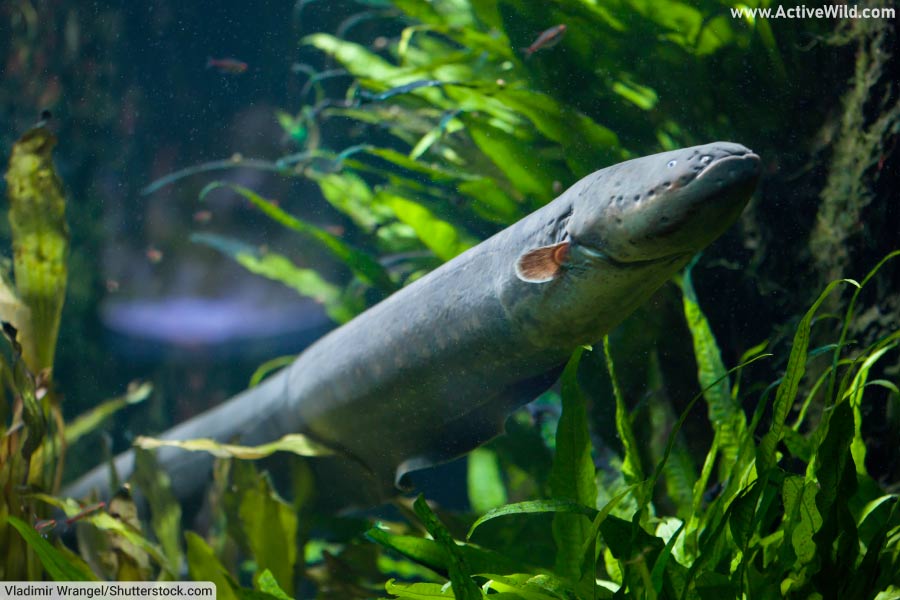
This extraordinary creature, known as the electric eel, belongs to the fish family Gymnotidae and can be found in the rivers and swamps of South America. Its scientific name is Electrophorus electricus, and it currently holds a conservation status of Least Concern.
Measuring up to 2 meters or 6.56 feet in length, the electric eel possesses a remarkable ability to generate a powerful electrical charge. Despite its name, it is not a true eel but rather a member of the knifefish family, which falls under the order Gymnotiformes. True eels, on the other hand, belong to the order Anguilliformes.
All knifefish, including the electric eel, possess the remarkable capability to produce electrical charges that aid them in navigating through dark and muddy waters. The electric eel’s electrical charge is not only used for self-defense but also to capture its prey.
While receiving an electric shock from an electric eel can be excruciatingly painful, it is rarely fatal.
Freshwater Crab
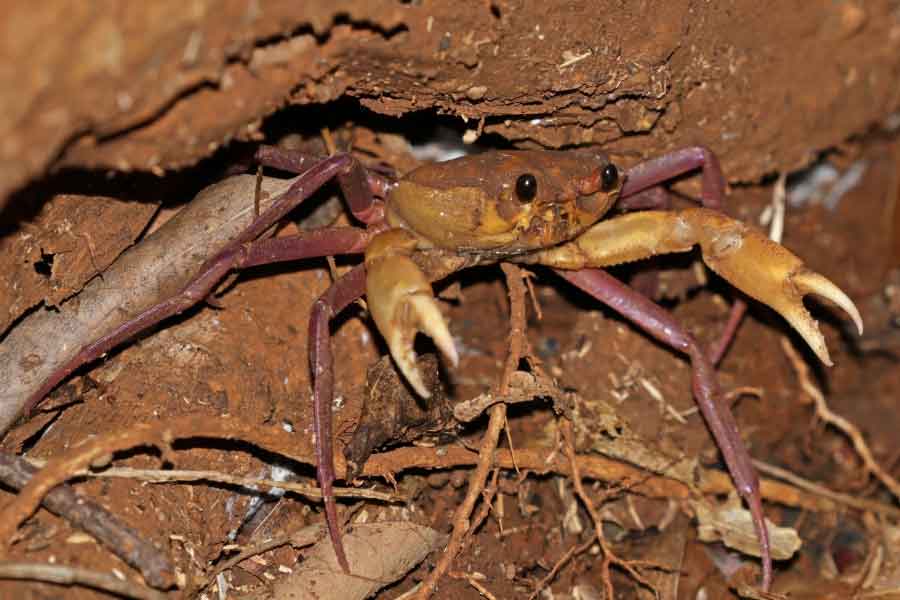
Crustaceans known as crabs are primarily found in marine habitats but there are approximately 1,300 out of nearly 8,000 known crab species that inhabit freshwater environments. These freshwater crabs are commonly found in tropical and subtropical regions and are categorized into eight different families.
In addition to possessing gills for underwater respiration, certain freshwater crabs have developed lung-like structures within their gill chambers, enabling them to extract oxygen from the air.
Unlike their marine counterparts that produce abundant larvae, female freshwater crabs give birth to fewer offspring and display parental care towards them.
Freshwater Jellyfish
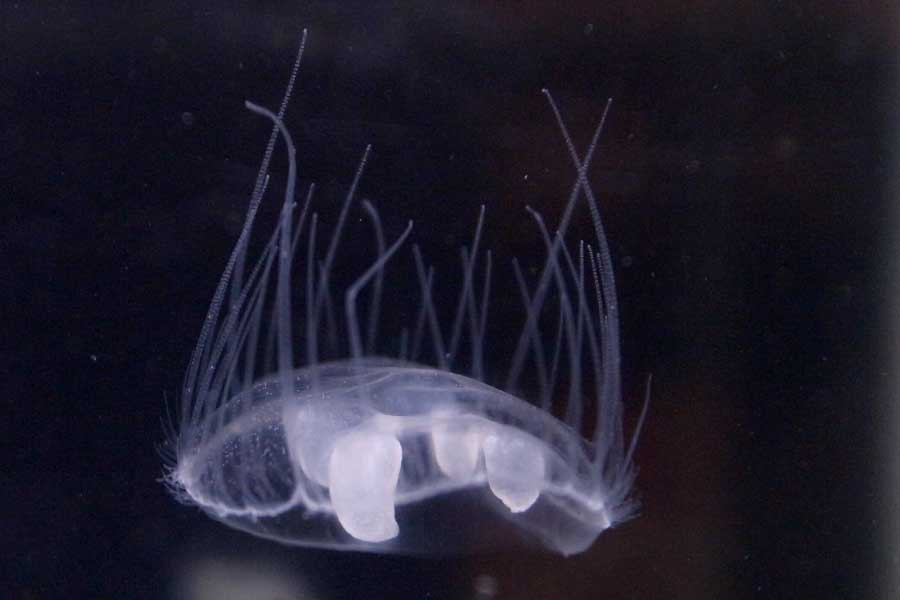
Animal Type: Cnidarian Family: Olindiidae Habitat: Found on all continents, excluding Antarctica Scientific Name: Craspedacusta Sowerbii Conservation Status: Not assessed
While the majority of jellyfish inhabit marine environments, there are certain species of the Hydrozoa class that reside in freshwater habitats. One such hydrozoan is known as Craspedacusta Sowerbii, or commonly referred to as the peach blossom jellyfish or freshwater jellyfish.
Originally discovered in China, this freshwater jellyfish has managed to spread across all continents, except Antarctica. It is believed to have been introduced through transportation via aquatic plants, fish, or carried by waterfowl.
The diameter of the freshwater jellyfish ranges from 5 to 25mm, and it possesses anywhere between 50 to 500 tentacles. Like other jellyfish, the tentacles of this species contain stinging cells. However, it’s worth noting that the stinging cells of the freshwater jellyfish are unable to penetrate human skin, making them harmless to humans.
Frog
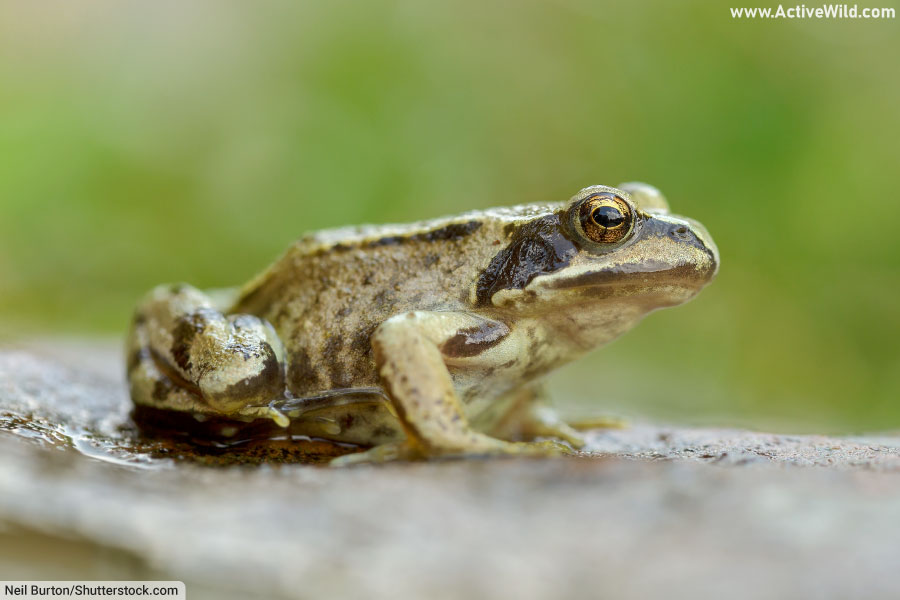
Amphibians of the order Anura, commonly known as frogs, are small to medium-sized predatory creatures.
The life cycle of frogs begins with hatching from eggs and entering an aquatic stage called tadpole, where they lack limbs and rely on their long tails to move through the water. During this phase, they breathe using gills.
However, frogs undergo a remarkable transformation called metamorphosis. During this process, they undergo physical changes, including the loss of their gills and tails, and the development of lungs and limbs.
Once the metamorphosis is complete, frogs reach their adult form. In this stage, they are capable of breathing air and can explore both aquatic environments and land.
Giant Freshwater Stingray
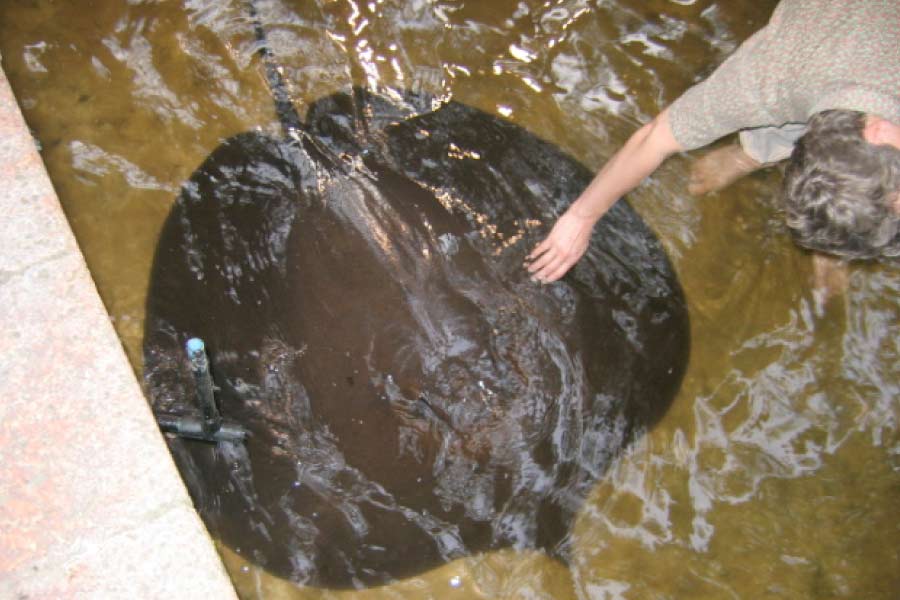
Fish of the Dasyatidae family, the giant freshwater stingray, or giant freshwater whipray, holds the distinction of being the largest freshwater fish in the world. Reaching impressive lengths of up to 16.4 ft. / 5 m and widths of up to 7.2 ft. / 2.2 m, this magnificent creature is in a league of its own.
Naturally occurring in the rivers and estuaries of Asia, particularly in Southeast Asia, the giant freshwater stingray is part of the suborder Myliobatoidei, which comprises approximately 220 different stingray species.
Similar to its stingray relatives, this extraordinary fish possesses a formidable stinger on its tail capable of inflicting severe injuries upon humans. Such a feature serves as a reminder of the stingray’s powerful defensive abilities.
Green Anaconda
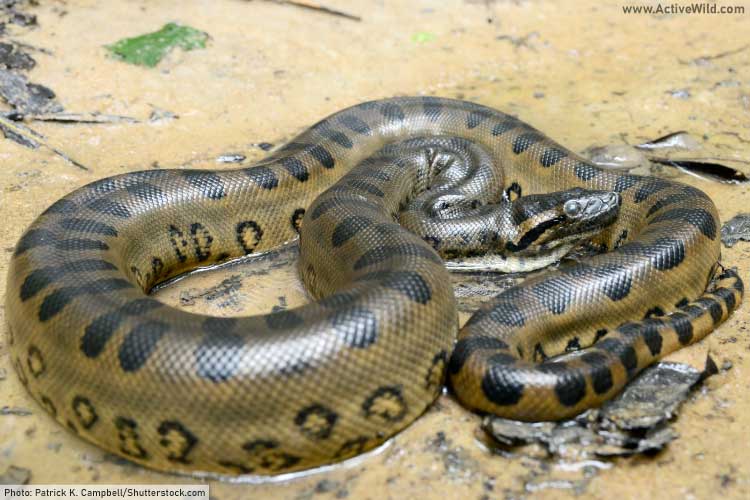
Animal Type: Reptile Family: Boidae Habitat: South America Scientific Name: Eunectes murinus Conservation Status: Least Concern
Known as the green anaconda, this remarkable reptile hails from the watery landscapes of South America. It belongs to the Boidae family and holds the scientific name Eunectes murinus. While not the longest snake in the world (that distinction goes to the reticulated python), the green anaconda claims the heavyweight title, growing up to 10 – 12 meters (32.8 – 39.4 feet) in length and weighing around 250 kilograms (551 pounds). The female anacondas tend to be larger than their male counterparts.
As a semiaquatic predator, the green anaconda thrives in freshwater lakes and rivers across northern and central parts of South America. Its hunting prowess lies in its exceptional swimming skills, enabling it to lurk beneath the water’s surface, patiently awaiting unsuspecting prey. The green anaconda is an opportunistic feeder, devouring a wide array of creatures such as deer, large rodents, fish, turtles, birds, and even caimans.
Thanks to its sluggish metabolism, this mighty serpent can endure extended periods without sustenance following a substantial meal.
Hellbender
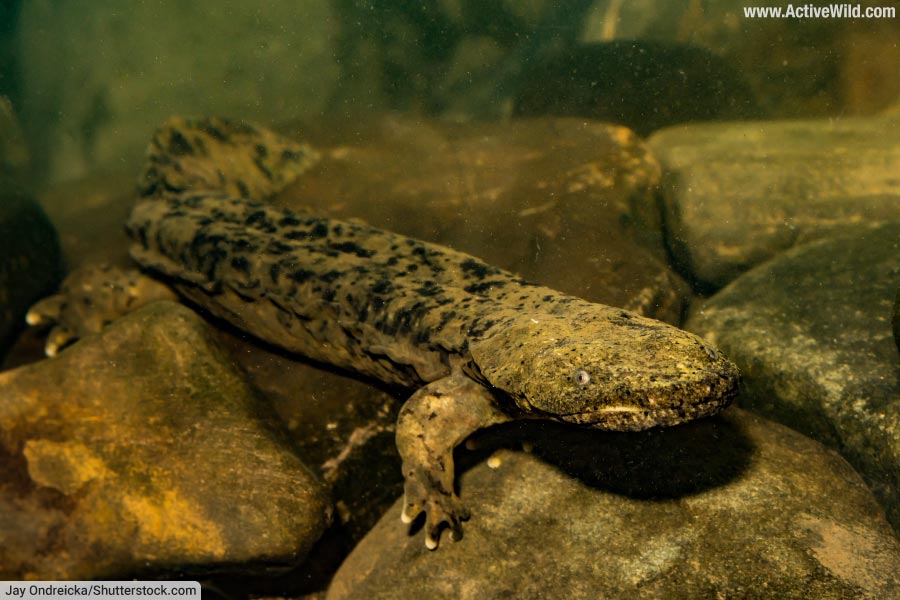
This remarkable creature known as the hellbender, found in the rivers and streams of North America, is an amphibian belonging to the Cryptobranchidae family. Its scientific name is Cryptobranchus alleganiensis, and it holds the conservation status of being vulnerable.
The distinguishing features of the hellbender include its impressive size and the wrinkled frills of skin that adorn its body’s sides. It is a member of the giant salamander family, along with its counterparts from Japan, China, and South China. There is a possibility of an additional, fifth species in China.
Despite being the smallest of the giant salamanders, the hellbender can grow up to 74 cm (29 inches) in length, making it the largest amphibian native to North America. Unlike many amphibians that can live on land after completing their metamorphosis, the hellbender remains fully aquatic throughout its adult life.
One of the notable adaptations of the hellbender is the presence of folds in its skin, which serve as an oxygen-absorbing mechanism. These folds increase the creature’s surface area, enhancing its ability to absorb oxygen. Most of the hellbender’s oxygen requirements are fulfilled by absorbing it directly from the water through its skin.
Heron
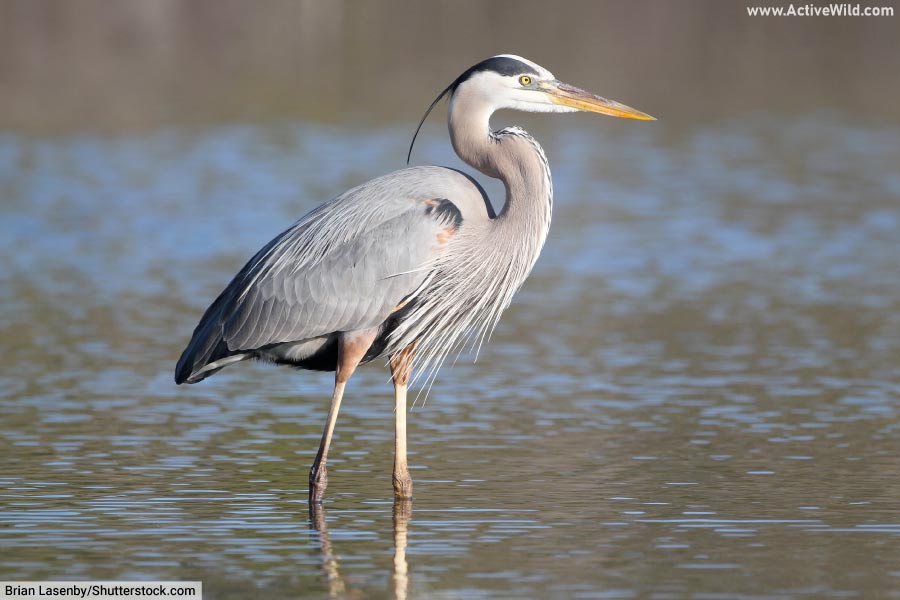
Birds known as herons belong to the Ardeidae family. These avian predators possess lengthy necks, legs, and formidable bills. Their hunting technique involves patiently waiting at the water’s edge, seizing passing prey with quick and precise strikes from their dagger-like bills.
Herons primarily target aquatic creatures like fish and amphibians, but they are not averse to pursuing mammals and reptiles as well.
Among the most recognizable herons in North America is the great blue heron, while the grey heron is a familiar wetland bird found in Europe and Asia.
Although herons are commonly observed in freshwater environments, they can also be spotted near coastal areas.
The Ardeidae family comprises herons, egrets, and bitterns, collectively representing these remarkable water-loving birds.
Hippopotamus
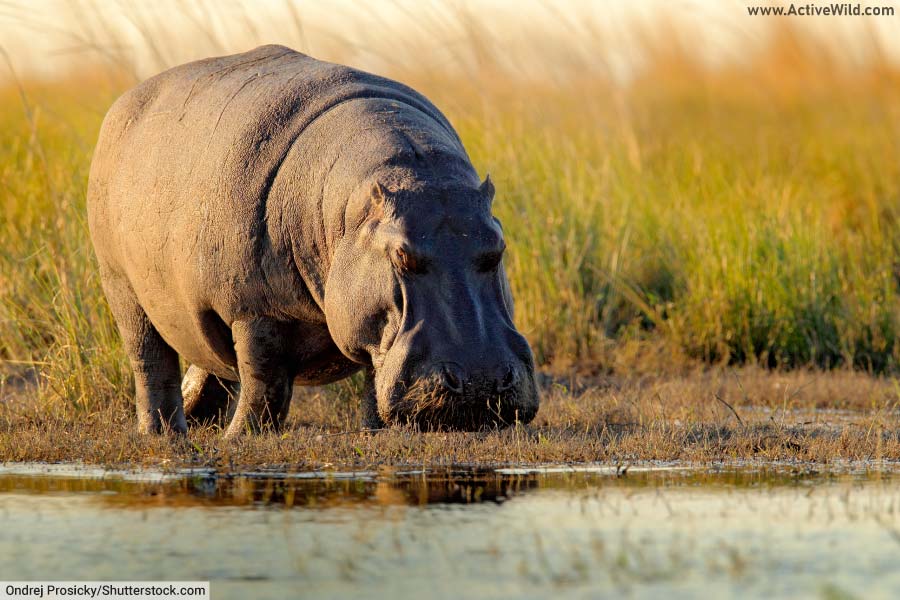
The common hippopotamus, also known as the “hippo,” is a remarkable mammal found in Africa. It belongs to the Hippopotamidae family and is scientifically known as Hippopotamus amphibius. Weighing an impressive 1,300 to 1,500 kg (2866.01 to 3306.93 lb.), it holds the sixth position among the heaviest land animals, surpassed only by elephants, white rhinos, Indian rhinos, and a few others.
Within the hippopotamus family, the pygmy hippopotamus stands as the only other living member. This smaller relative inhabits the lush rainforests of West Africa.
Interestingly, cetaceans such as whales and dolphins share the closest kinship with hippos among living creatures.
Hippos lead a semi-aquatic lifestyle, spending most of their days immersed in water and emerging only in the evening to graze. Despite being herbivores that primarily consume plants, their immense size and aggressive demeanor make them one of Africa’s most perilous animals.
Kingfisher

Birds of the Alcedinidae family, commonly known as kingfishers, possess distinct characteristics such as large heads, robust bills, and vibrant plumage, making them small to medium-sized avian creatures. Interestingly, despite their family name, not all of the approximately 115 species within this group reside in proximity to water or rely on fish for sustenance.
Among the kingfishers, those that do inhabit water-rich environments and indulge in fish consumption are predominantly categorized into two subfamilies: the “River Kingfisher” and the “Water Kingfisher.” These adept hunters often plunge into rivers and lakes from perches, skillfully seizing their prey using their elongated bills.
Familiar examples of kingfishers include the belted kingfisher, a water kingfisher predominantly found near freshwater bodies in North America, and the common kingfisher, also known simply as “kingfisher,” which belongs to the river kingfisher subgroup and can be spotted in Europe and North Africa.
While these species typically thrive in freshwater habitats, it is worth noting that they occasionally venture into coastal areas as well.
Lake Trout
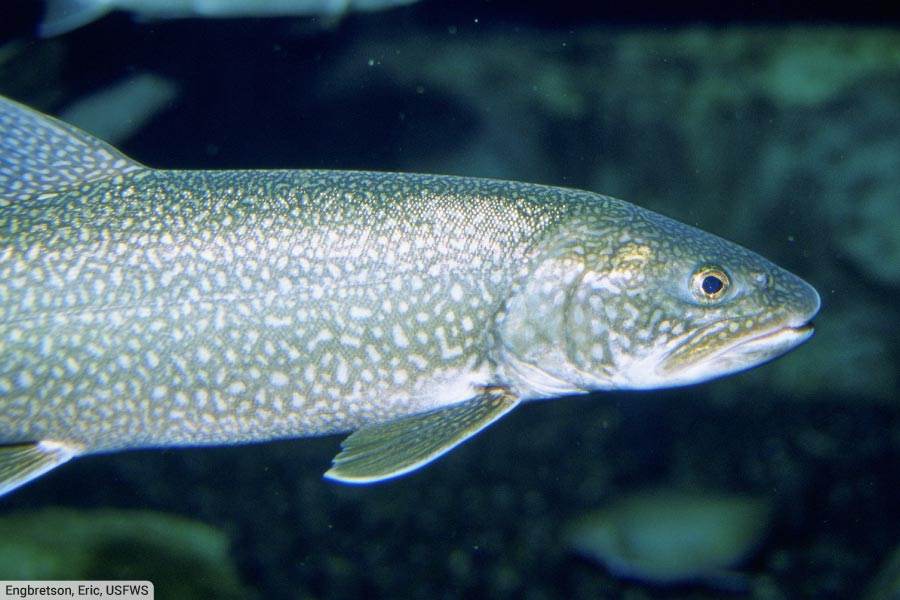
Fish Type: Lake Trout Family: Salmonidae Habitat: North America Scientific Name: Salvelinus namaycush Conservation Status: Unassessed
The lake trout, a member of the Salmonidae family, can be found residing in lakes across North America. Despite its name, it is actually a char, specifically belonging to the Salvelinus genus, rather than being a true trout (which falls under the Salmo genus, although there are some char species also referred to as trout).
This fish thrives in cold, well-oxygenated waters and is commonly encountered in all five of the Great Lakes. Once it reaches adulthood, its diet primarily consists of various freshwater fish, such as ciscoes and sculpins.
Largemouth Bass
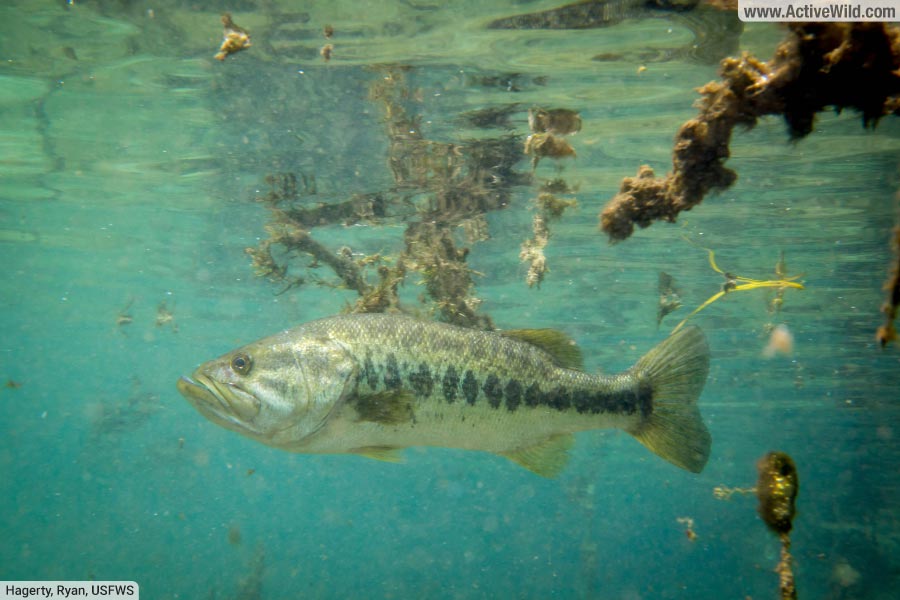
The largemouth bass, a freshwater fish thriving in North America, can be spotted in the United States, southern parts of Canada, and northern regions of Mexico. Among the black bass family, it stands as the largest member, closely related to its counterpart, the smallmouth bass.
Distinguishing itself from its smallmouth relative, the largemouth bass boasts a greater size, a larger mouth that extends beyond its eye, a green hue instead of brown, and horizontal dark blotches along its sides, as opposed to vertical ones.
Both species are highly sought-after targets for anglers.
Typically, a largemouth bass measures around 16 inches in length, although the longest recorded individual stretched an impressive 38.2 inches.
Mayfly
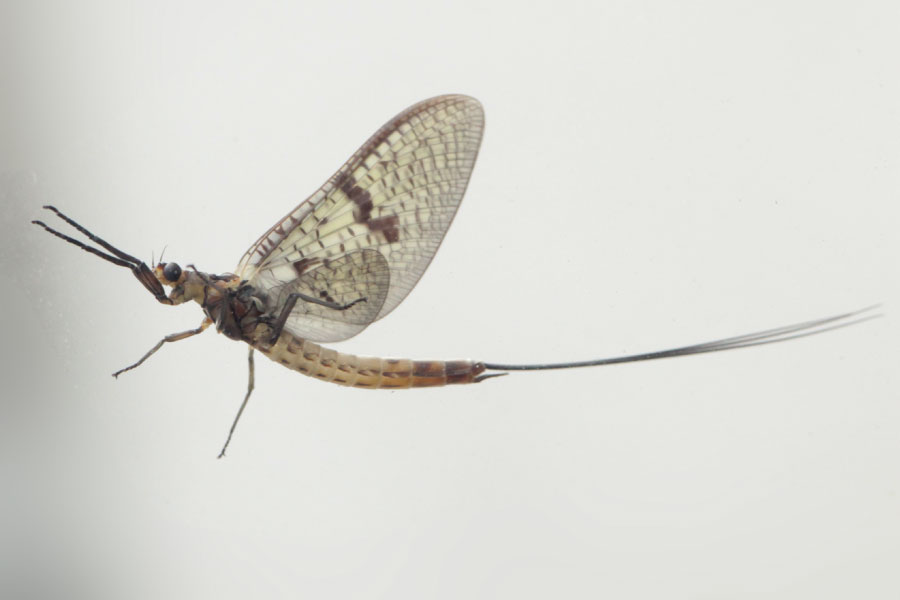
Mayflies are small insects that inhabit various freshwater environments across the globe. When fully grown, they have elongated bodies and delicate, lengthy wings that stand upright instead of being folded along their backs.
The majority of a mayfly’s life is spent underwater in the form of a larva or nymph. Depending on the particular species, this stage can persist for several years.
Eventually, the mayfly nymph experiences its second-to-last molting process, emerging as a partially developed winged creature. Interestingly, mayflies are the only insects with two distinct stages of winged development.
Upon leaving the water, the subadult mayfly completes its final molting phase. In its ultimate adult stage, which typically lasts from a few hours to a day, the mayfly mates and the females lay their eggs.
With over 3,000 known species, mayflies exhibit remarkable diversity. Most mayfly nymphs thrive in clean, unpolluted water, making their presence indicative of a thriving and balanced ecosystem.
Newt
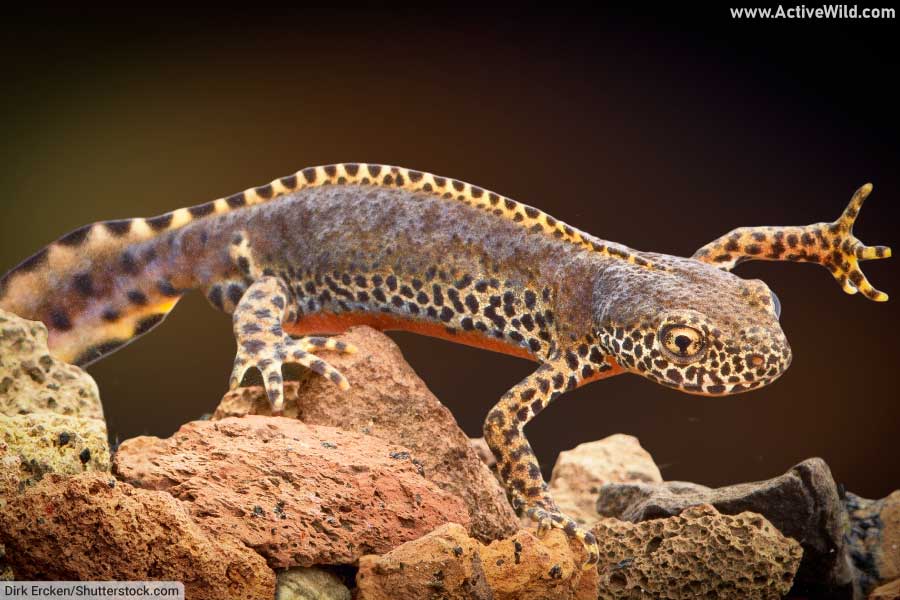
Newts, belonging to the subfamily Pleurodelinae and being a part of the salamander family, are fascinating amphibians. With approximately 100 known species (according to the Catalogue of Life, which lists 105 species), they exhibit a remarkable transformation known as metamorphosis. This process involves their transition from aquatic larvae equipped with fins and gills to terrestrial adults possessing legs and lungs.
Once they reach adulthood, newts venture out of the water, although certain species only return periodically for breeding purposes.
Northern Pike
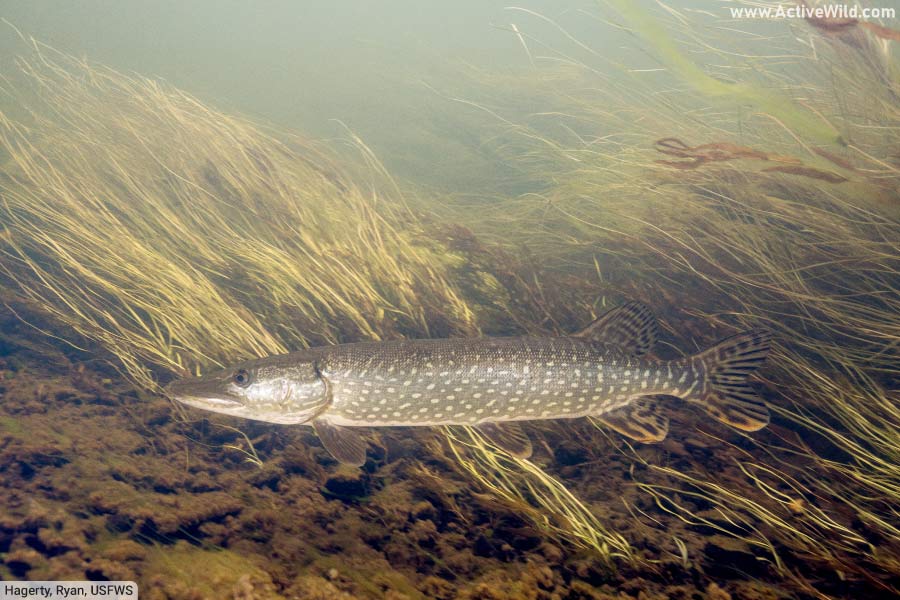
The northern pike, also known as the pike in the UK and North America, is a formidable freshwater predator that roams the rivers, lakes, and streams of the Northern Hemisphere.
With its sleek and streamlined body resembling a torpedo, the pike possesses a commanding presence. Its sizable mouth is brimming with razor-sharp teeth, while its olive-green hue adorned with pale green patterns helps it blend into its surroundings.
Operating as an ambush hunter, the pike patiently bides its time, patiently waiting for suitable prey to draw near. Once the opportune moment arrives, it unleashes a lightning-fast assault, utilizing its extraordinary speed and strength to ensnare its victim within its backward-facing teeth.
Otter
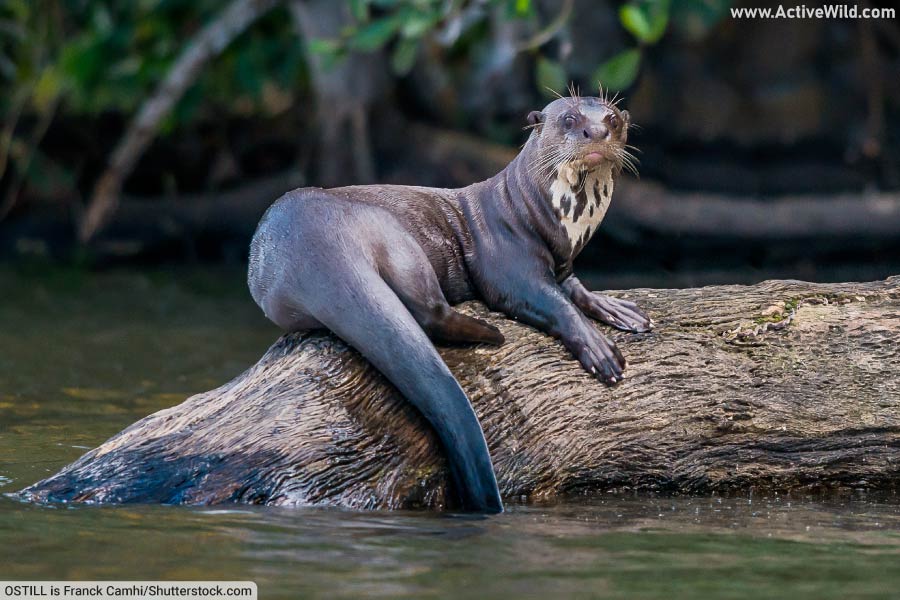
Nearly all of the 13 otter species inhabit freshwater environments, with only two exceptions: the marine otter in South America and the sea otter in cold northern waters, both of which are found in saltwater habitats.
These water-dwelling carnivores belong to the weasel family, Mustelidae, specifically the subfamily Lutrinae.
Otters possess elongated bodies, short legs, and lengthy tails. They have various adaptations suited for their aquatic lifestyle, including webbed feet for efficient swimming, the ability to hold their breath for extended periods, and the capability to close their ears and nostrils while submerged underwater.
For most otter species, fish constitute the majority of their diet.
Piranha
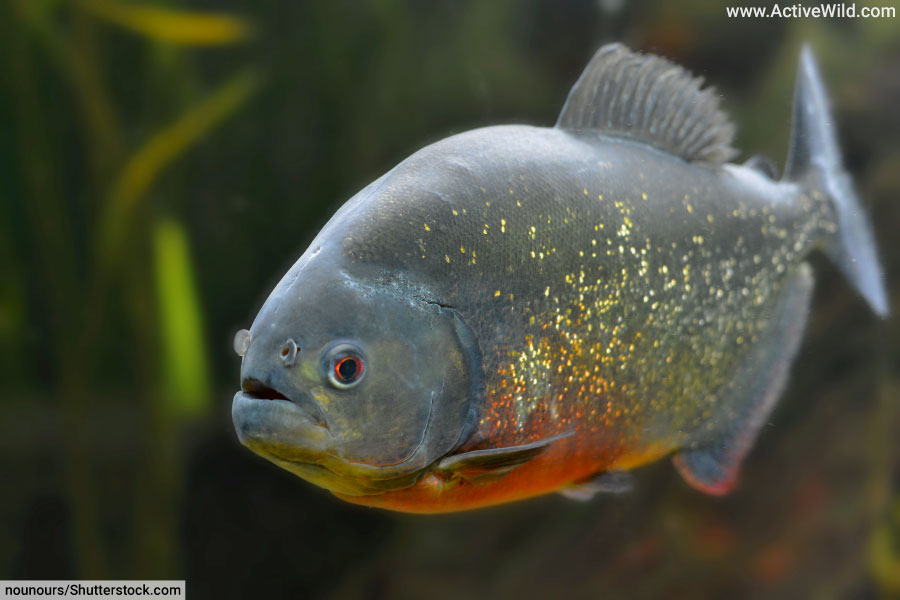
Piranhas, those inhabitants of South American rivers and lakes, are freshwater creatures known for their formidable presence. With their impressive teeth and mighty jaws, they have gained a fearsome image as skilled predators. However, this notion holds only partly true, as most piranhas have an omnivorous diet, and they often fall victim to other aquatic creatures like caimans.
While piranhas may sporadically target humans, these encounters typically lead to nothing more than superficial cuts on the hands or feet.
River Dolphin
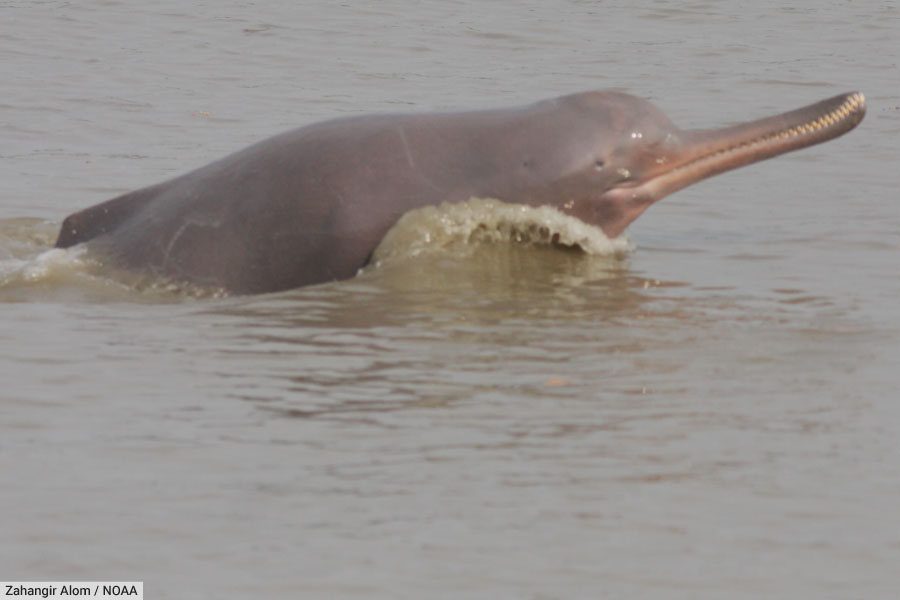
There exist numerous types of river dolphins, with some debate among scientists regarding the exact number. South American river dolphins share great similarities and may actually be subspecies of the same species.
These river dolphins inhabit both South America and Asia. Despite the lack of close genetic relations between the two groups, they share common characteristics. They are smaller in size compared to their ocean-dwelling counterparts and rely heavily on echolocation for navigation and hunting.
In Asia, river dolphins either have limited vision or are completely blind. Clear eyesight is not a necessity in the murky waters that these freshwater mammals call home.
The largest species of river dolphin is the Amazon river dolphin, which is found in South America. Unlike its Asian relatives, this dolphin possesses fully functional eyes.
Turtle
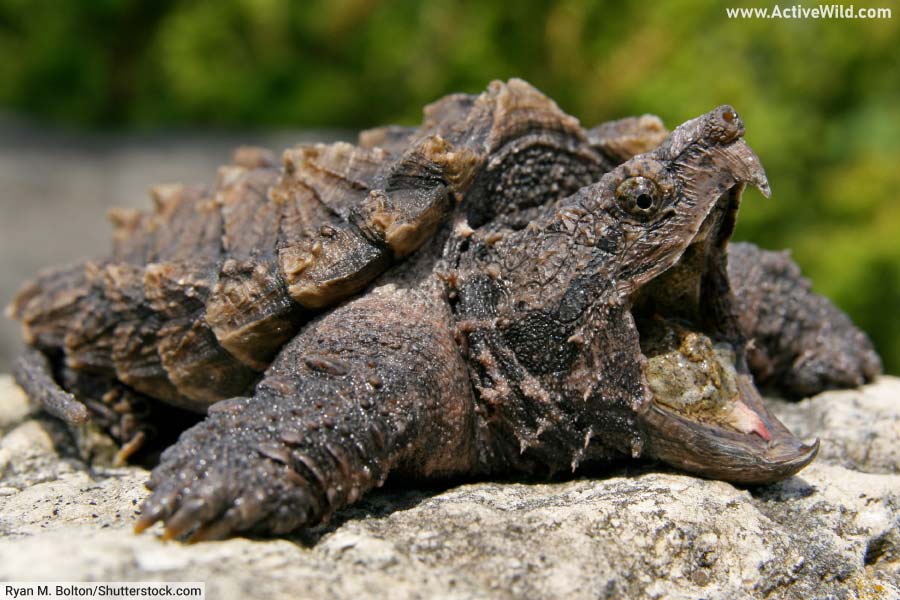
Turtles, members of the Testudines order, are reptiles that fall into one of the four reptilian groups, along with crocodiles, lizards, snakes, and tuataras. These fascinating creatures can be easily recognized by their sturdy, curved shells and thick, flexible skin.
With approximately 360 different species, turtles exhibit a diverse range of characteristics. While not all turtles live in water, there are several aquatic species, commonly referred to as “sea turtles,” which inhabit marine environments. On the other hand, many turtles reside on land and are often called “tortoises.” Freshwater turtles make up the majority of turtle species and are typically found in or near bodies of water such as lakes and gentle rivers.
Some smaller freshwater turtles are specifically known as terrapins, while snapping turtles, belonging to the Chelydridae family, are renowned for their powerful jaws.
Water Boatman
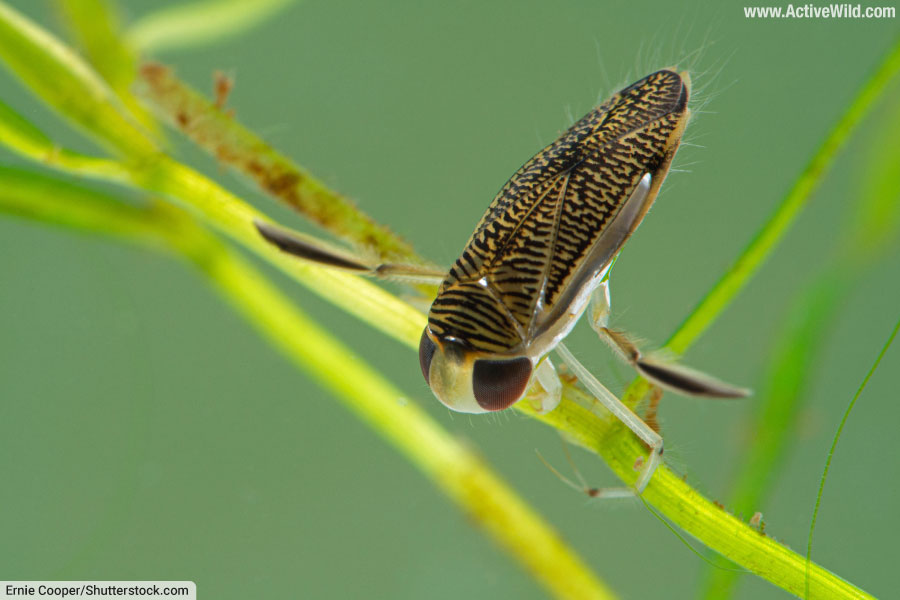
Water boatmen, also known as aquatic insects, have gained recognition with the discovery of around 400 to 500 distinct species (as per the Catalogue of Life, which specifically lists 402 species). Their presence is not confined to a particular region, as they inhabit freshwater habitats worldwide, with certain members of the family even adapted to survive in saltwater environments. These fascinating creatures possess flattened bodies and possess elongated legs that resemble oars, aiding them in navigating through water.
Primarily herbivores, water boatmen rely on a diet consisting largely of water plants and algae. They typically reside near the bottom of water bodies, occasionally venturing to the surface in search of air.
Water Strider / Pond Skater
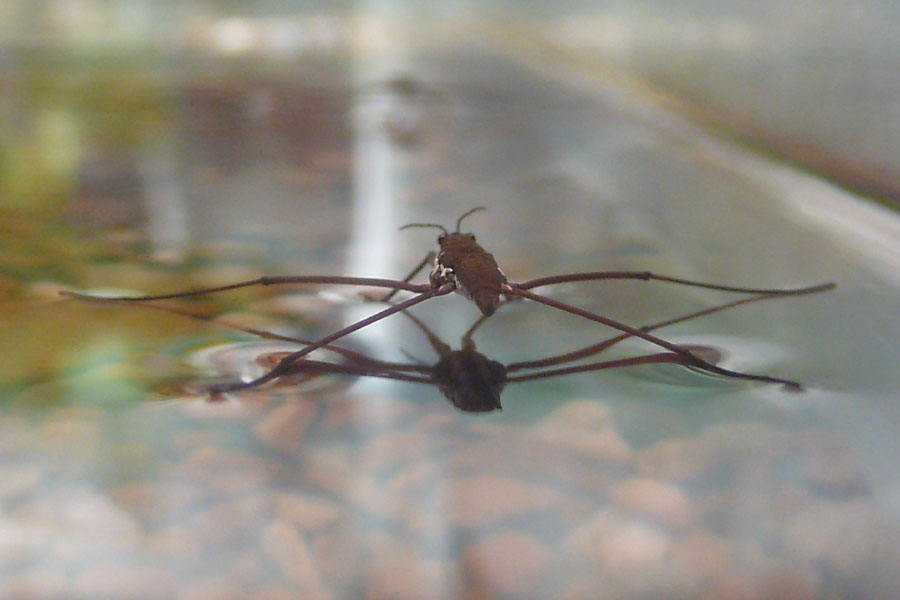
Water striders, often referred to as pond skaters, water skeeters, or water bugs, belong to a family of insects. The majority, approximately 90%, of these remarkable creatures inhabit freshwater habitats, while the remaining members can be found in saltwater environments.
What sets water striders apart is their remarkable ability to effortlessly walk on the surface of water. Their long legs, which are coated in tiny hairs that trap air, prevent them from breaking through the tension of the water’s surface.
In the realm of aquatic life, an organism that resides on the water’s surface, such as a water strider, is commonly known as a neuston.
Water Vole
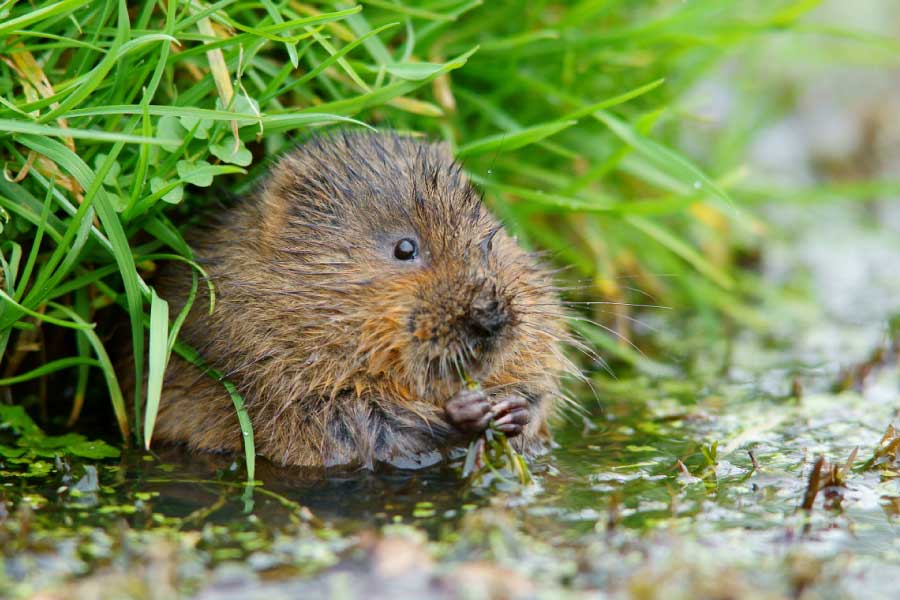
There are several types of rodents called “water voles,” with two well-known ones being the American water vole and the European water vole.
These voles belong to the Cricetidae family, which is the second largest family of mammals, consisting of 608 recognized species. Other members of this family include hamsters, lemmings, and New World rats and mice.
The American water vole can be found in the northwestern United States and southwestern Canada. It is one of the largest voles in North America, measuring between 7 and 10 inches in length. It possesses large hind feet that aid in swimming.
On the other hand, the European water vole measures between 14 and 22 cm in length. It has a rat-like appearance and is sometimes referred to as a “water rat.” However, it has a blunter nose compared to a brown rat and its fur is chestnut-brown rather than grey-brown.
Both of these water voles are currently classified as “Least Concern” in terms of global conservation status. However, the population of European water voles in the UK has significantly declined by up to 95% since the 1960s.
